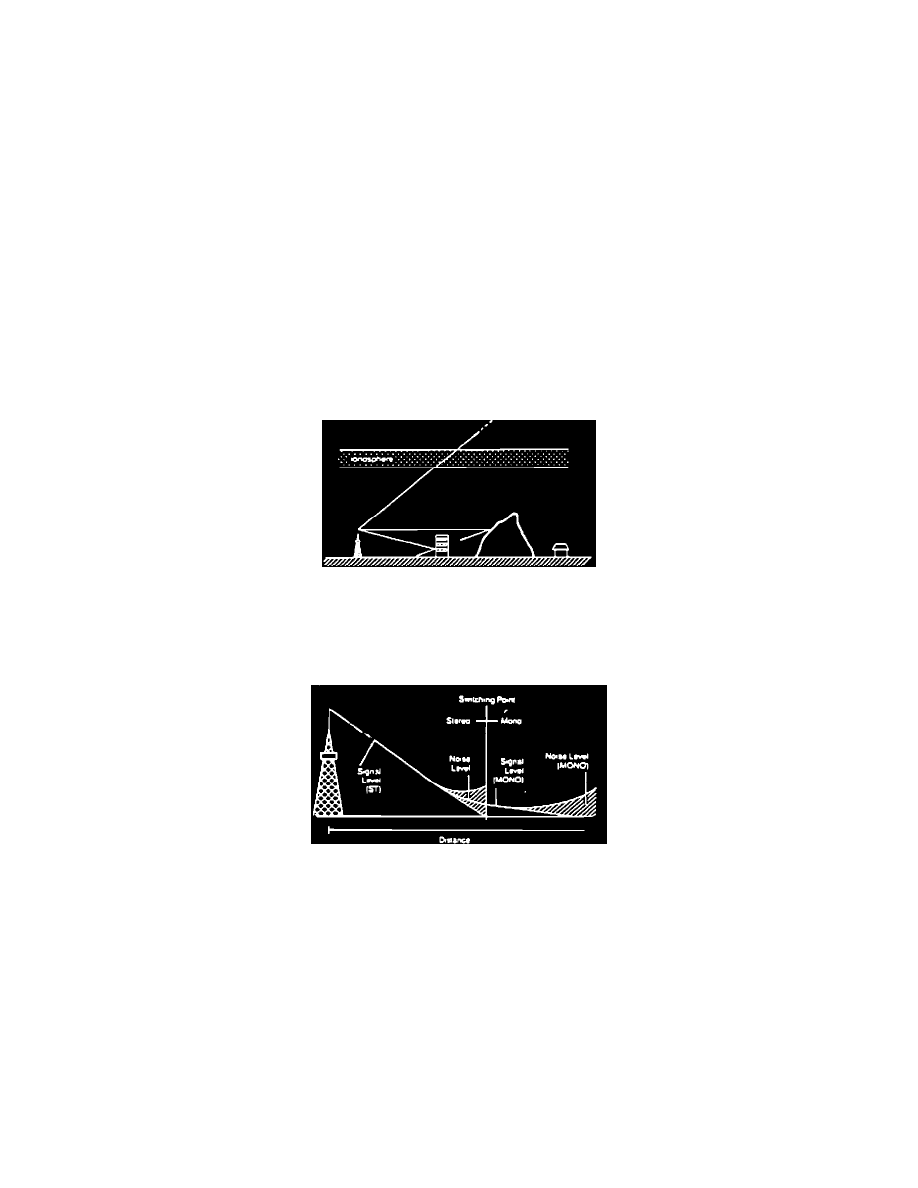Vanden Plas L6-4.0L (1990)

Radio/Stereo: All Technical Service Bulletins
Radio - Reception Information
SECTION: 86
No: 87
RADIO RECEPTION
Model: ALL
Date: MARCH, 1991
KEY POINTS:
RECEPTION CHARACTERISTICS
Refer to the following information first when diagnosing radio reception complaints:
FM RECEPTION:
FM radio signals are transmitted at very high frequencies and travel in straight lines. Because of this, they can be interrupted by obstacles such as tall
buildings and hills creating a "shadow" and causing a momentary loss of signal.
FM signals can also be reflected by obstructions, and the reflected signal can cancel out the main signal. This condition is known as "Multipath"
interference. Multipath is characterized by very short bursts of hiss interrupting the radio signal, which is normal when listening to weak stations,
especially in city areas.
Since FM signals travel in straight lines, the range of an FM transmitter is limited. In most cases it will not be more than a 20-30 mile radius.
Stereo reception requires a stronger signal than mono reception. When the signal is weak, the radio will switch automatically to mono to reduce the noise
level and allow reception over a greater distance. If the stereo indicator on the radio is flickering, it means the signal is very weak and excessive noise
will result.
AM RECEPTION:
AM radio signals are transmitted at much lower frequencies than FM, allowing them to bend around obstructions and giving them much greater range.
However, the signals will be considerably reduced when driving under power lines or overpasses, which may result in a loss of reception or interference.
